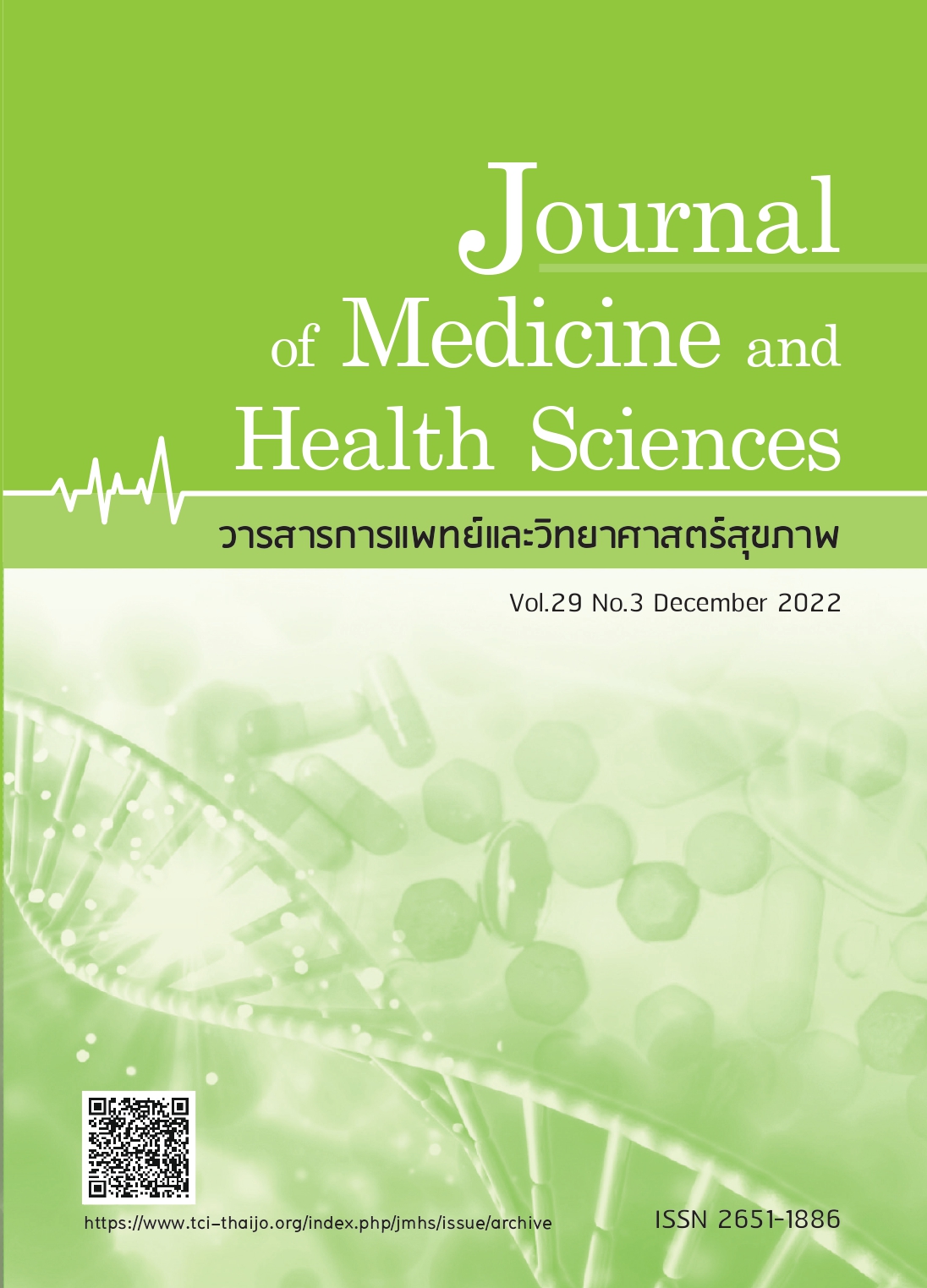Comparison of the plantar pressure distribution between imported and local materials used for custom-made foot orthoses in patients with type 2 diabetes
Keywords:
Type 2 diabetes, Neuropathic foot ulcer, Custom-made foot orthosis, Plantar pressure, Custom-made foot orthosis materialAbstract
Abstract
The prevention of foot ulcers in diabetic patients around the world can be achieved by the use of appropriate footwear. The recommendations for diabetic patients who have problems with foot ulcers for the prevention of such ulcers include foot care, regular foot screening, and the use of appropriate footwear. Many previous research studies have shown that high pressure on the plantar surface of the foot can be reduced by the use of custom-made foot orthoses with appropriate shoes. In diabetic foot clinics around the world, the choices of materials used to fabricate custom-made foot orthoses depend on the experience of the therapist and the availability of the materials in that area. There are many studies related to plantar pressure distribution in terms of the different types of material used to fabricate custom-made foot orthoses. However, the cost of imported material is higher when compared to the cost of local materials in Thailand. Consequently, the purpose of this study was to compare the plantar pressure distribution patterns during standing and walking between imported and local materials used to fabricate custom-made foot orthoses in diabetic patients with a moderate to high risk of foot ulcers in four areas of the foot: the hind foot, midfoot, forefoot, and toes. The study was conducted with 20 type 2 diabetic neuropathic participants. The participants received two types of custom-made foot orthoses: Insole P (fabricated from Plastazote®, Poron, and micro-cork) and Insole E (fabricated from ethylene-vinyl acetate foam, Poron, and micro-cork). The maximum plantar pressure and distribution were measured using a foot scan array sensor at the hind foot, midfoot, forefoot, and toes during standing and walking. When wearing Insole P, a lower peak pressure was observed in all areas except the heel area when participants were standing compared to with Insole E. Insole P and Insole E showed no significant differences in all areas when the participants were standing, except in the walking trial at the forefoot area, where Insole P had significantly lower peak plantar pressure compared to Insole E. Insole P and Insole E could both reduce the peak plantar pressure in all areas of the foot and provided good pressure distribution during both standing and walking for participants with type 2 diabetes.
References
National Health Commission Office [Internet]. Nontaburi: Sahaphattanaphaisarn Limited Partnership; 2007. 5th National
Health Act Thailand (2007); [cited 2021 Sep 16]. Available from: https://www.nationalhealth.or.th/sites/default/files/ upload_files/app650803_6654.pdf.
Pechkong D. Living Will [Internet]. [Bangkok]: The Secretariat of The House of Representatives 2021 [cited 2021 Sep 19]. Available: https://www.parliament.go.th/ewtadmin/ewt/elaw_parcy/ewt_dl_link.php?nid=1786.
Suwannil L. Preferences of patients and their surrogates for advance directives at the end of life [Master of Nursing Science Program in Adult Nursing]. Songkhla:Songkla University; 2012.
Bunchaloemwiphat S. According to Section 12 of the National Health Act Thailand (2007); Right for Natural Death [Internet]. [Nontaburi]: National Health Commission Office; [cited 2021 Sep 16].Available from: https://infocenter.nationalhealth.or.th/node/27592.
Bussa P, Pornpiboon P, Sittisombut S.Knowledge and Attitude Regarding Advance Directives for End of Life Care Among Physicians and Nurses. Nursing J 2019;46:38-48.
Intajak T, Prutipinyo C, Sirichotiratana N, et al. Senior Citizens’ Opinion on Declaration of Intention to Refuse Public Health Service at Patients’ Terminal Stage of Life in Lampang Province. JPHLaw 2018;4:164-77.
Kangwansura R, Tienthavorn T, Srisuwan P, et al. Factors affecting older adults’ decision-making on having a living will. PCFM 2022;5:33-44.
Srisuwan P. Attitudes towards living wills and factors affecting living wills writing decisions of Borabue hospital’ patients. AJMPPHO 2016-207;1:39-50.
Downloads
Published
How to Cite
Issue
Section
License

This work is licensed under a Creative Commons Attribution-NonCommercial-NoDerivatives 4.0 International License.



